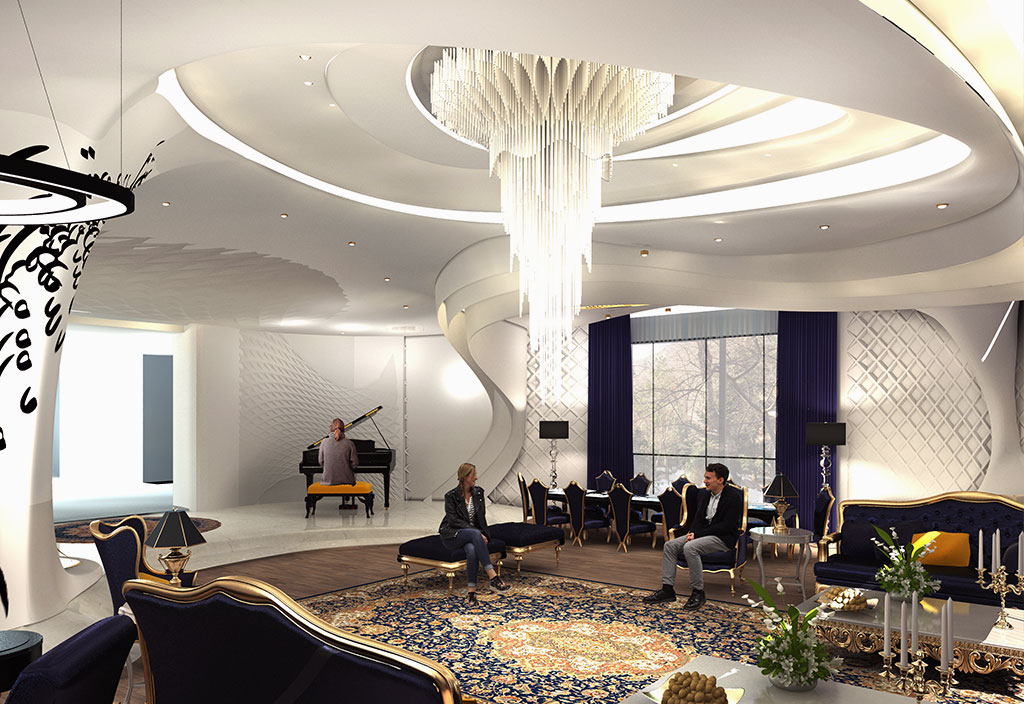
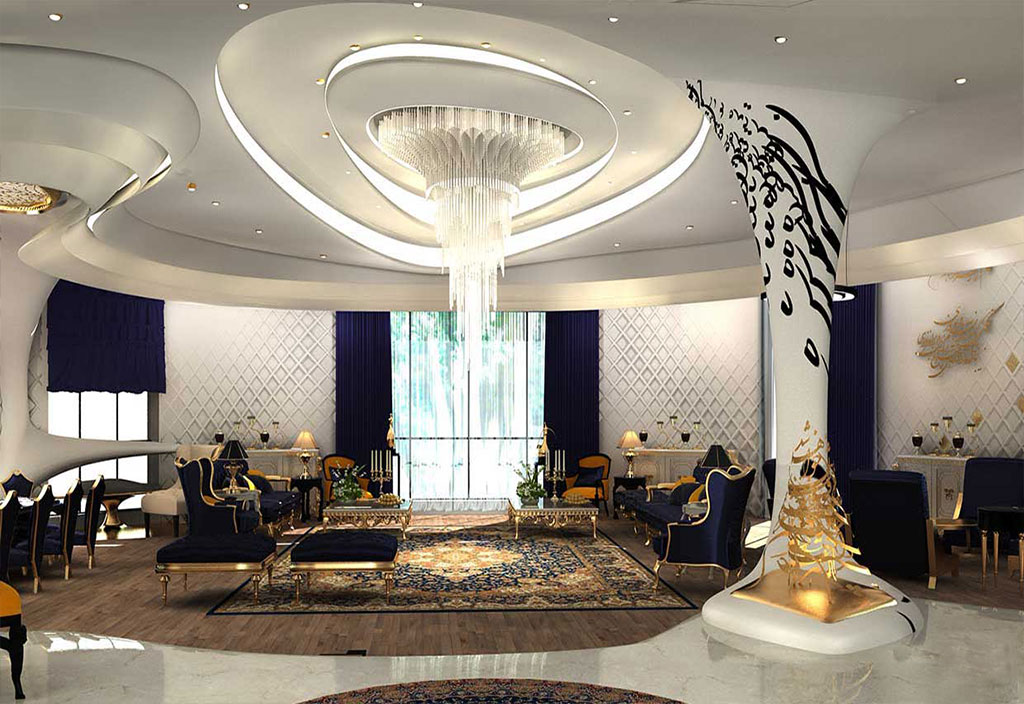
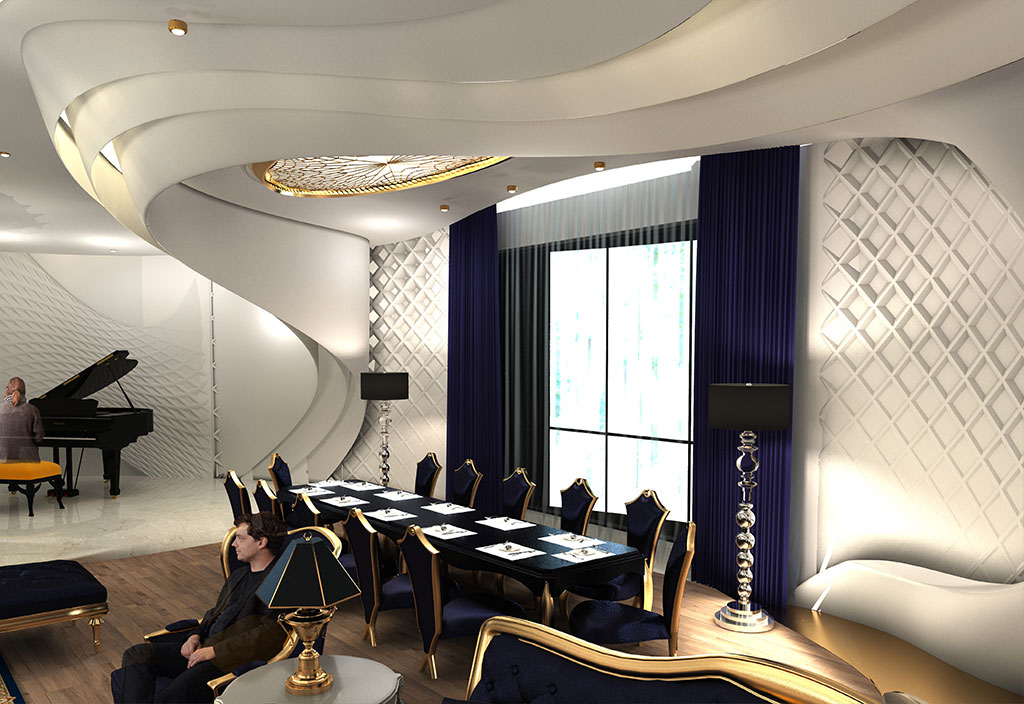
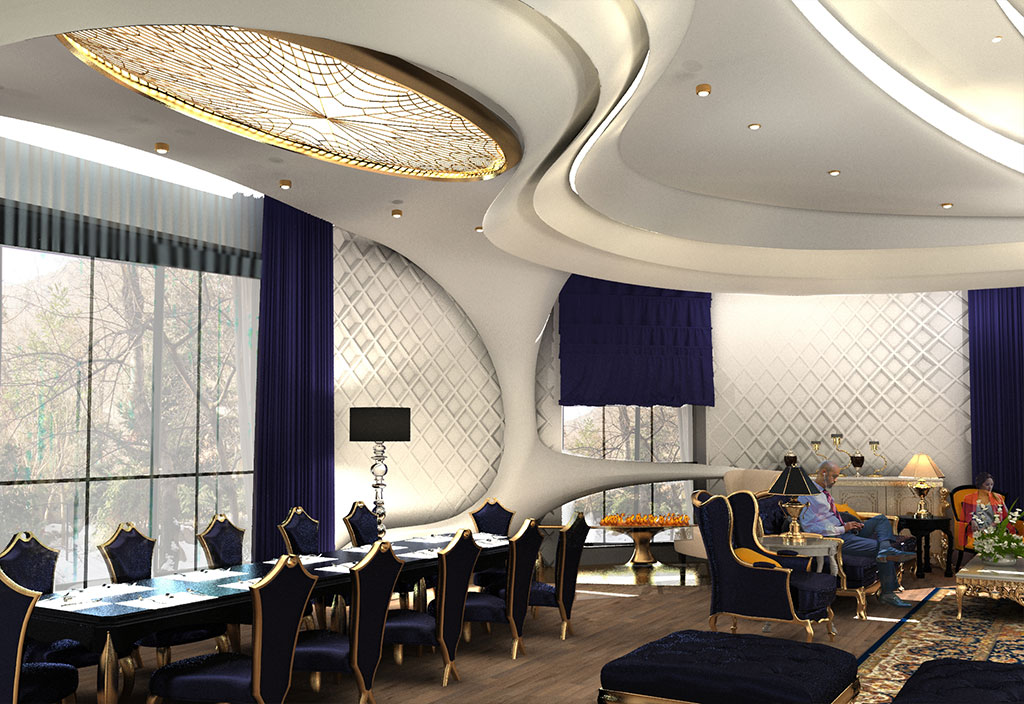
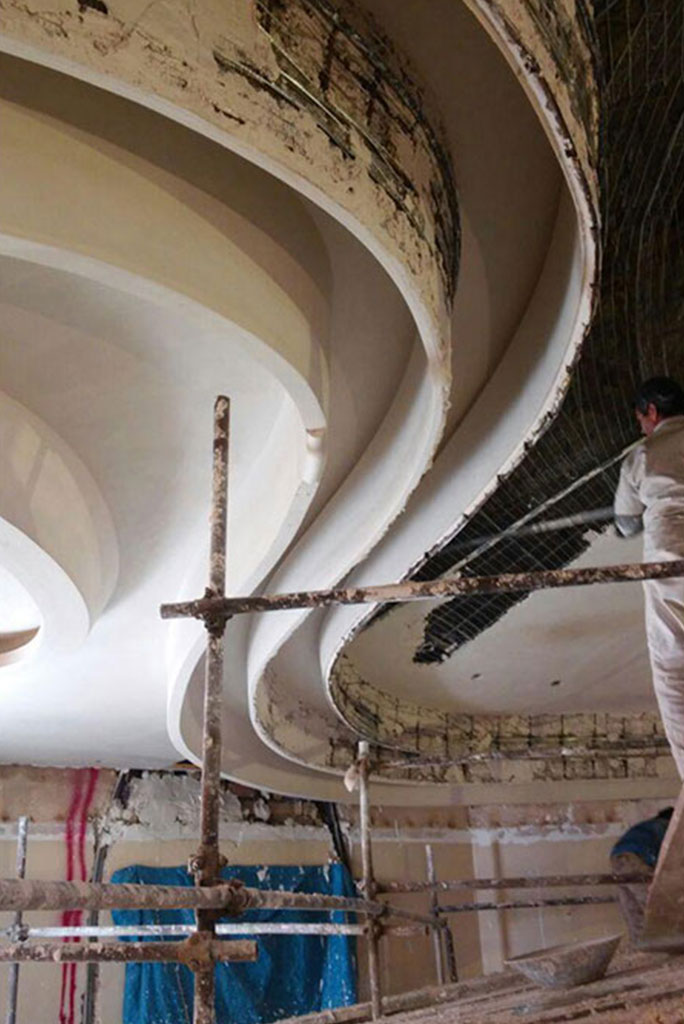
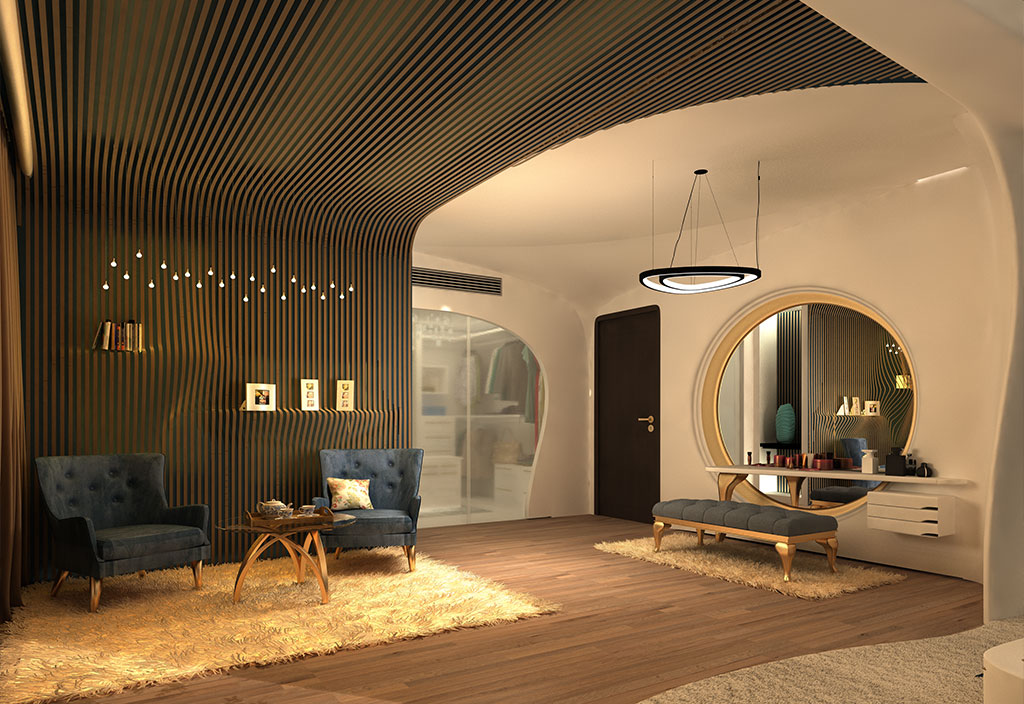




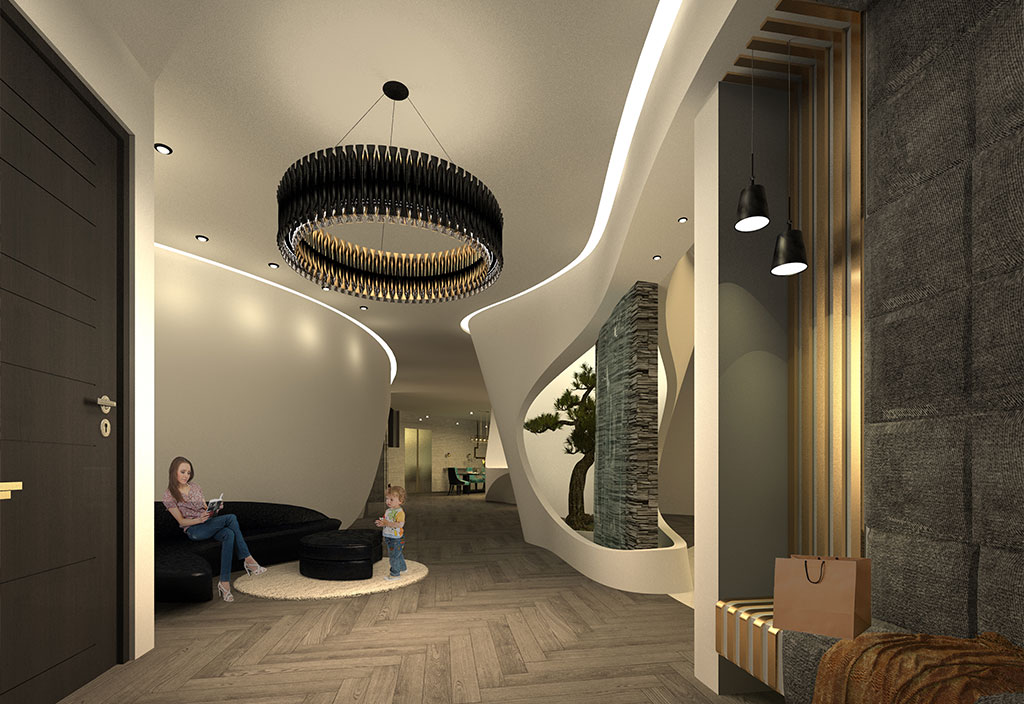
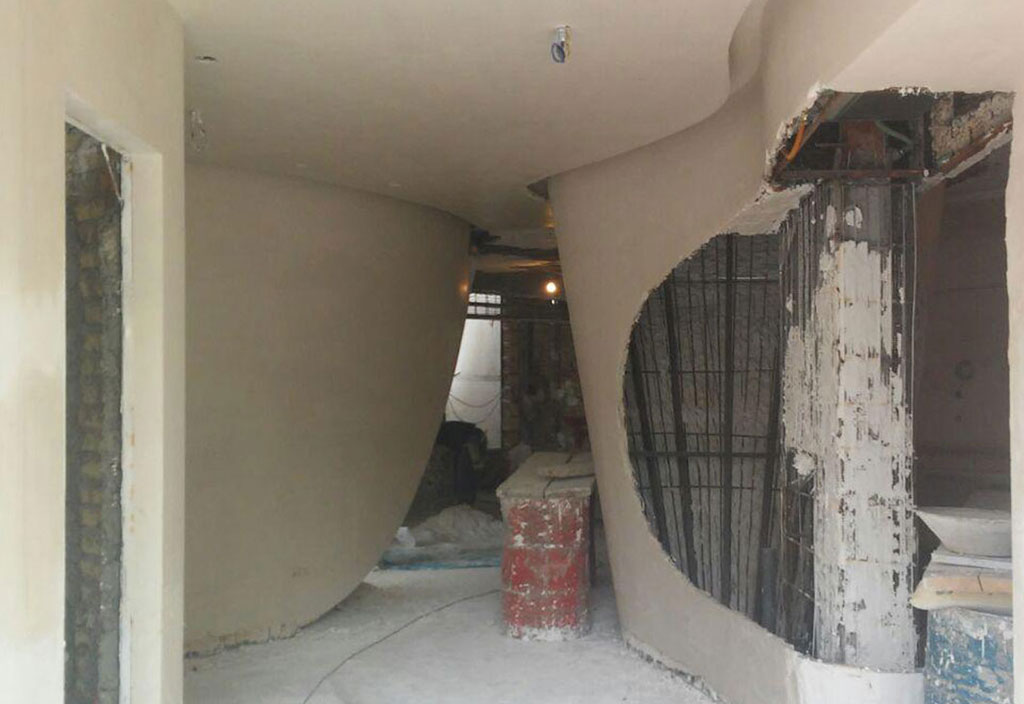

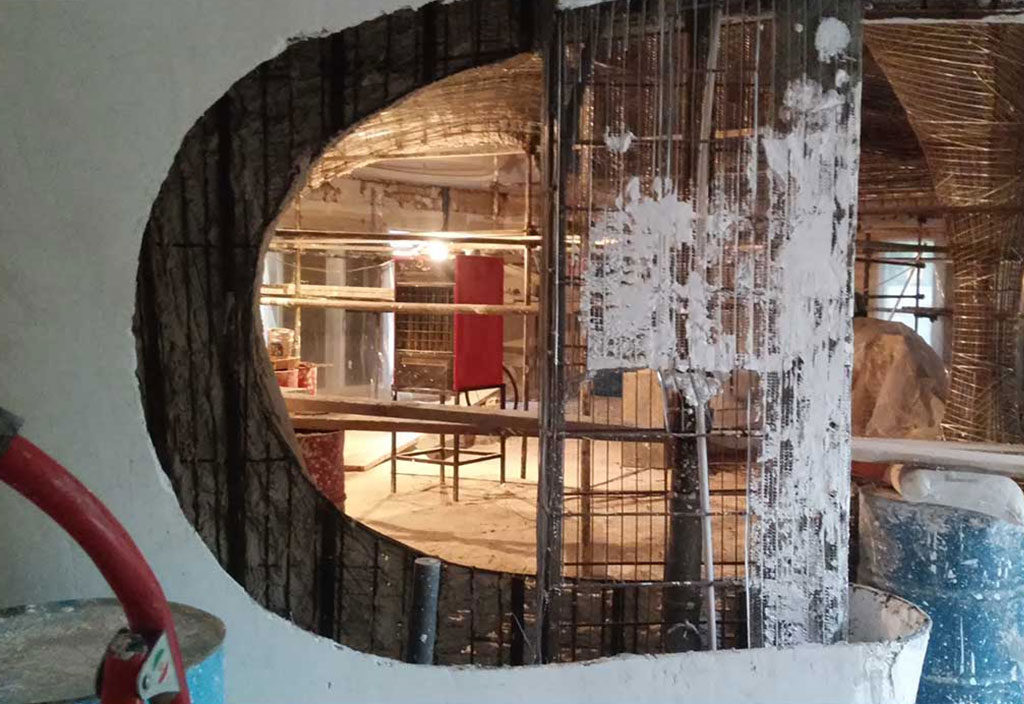


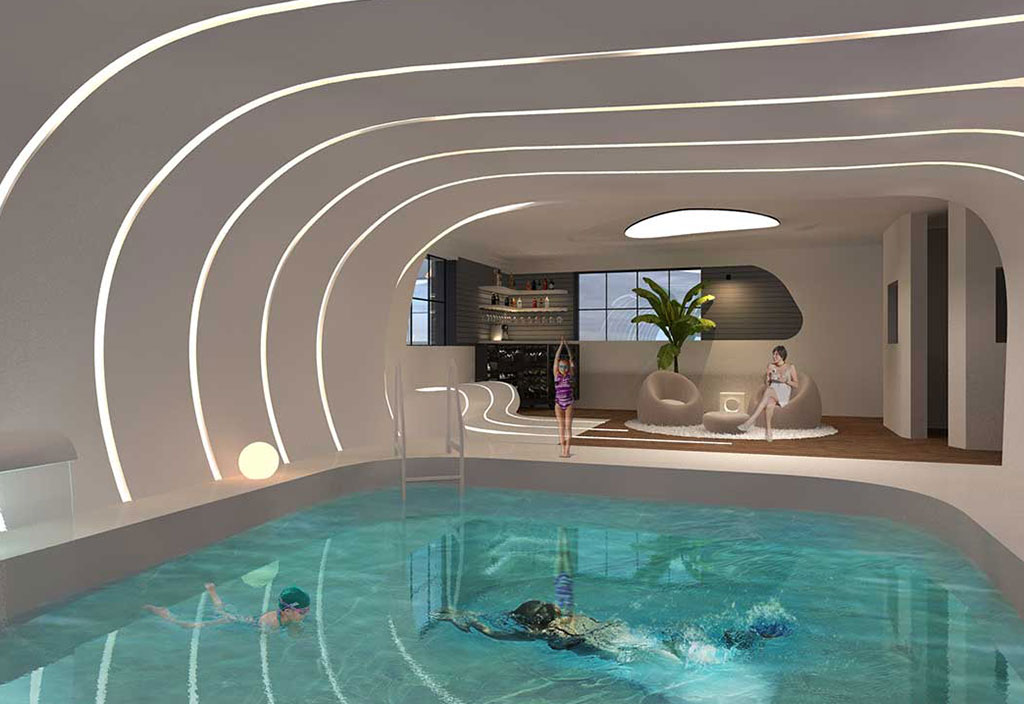
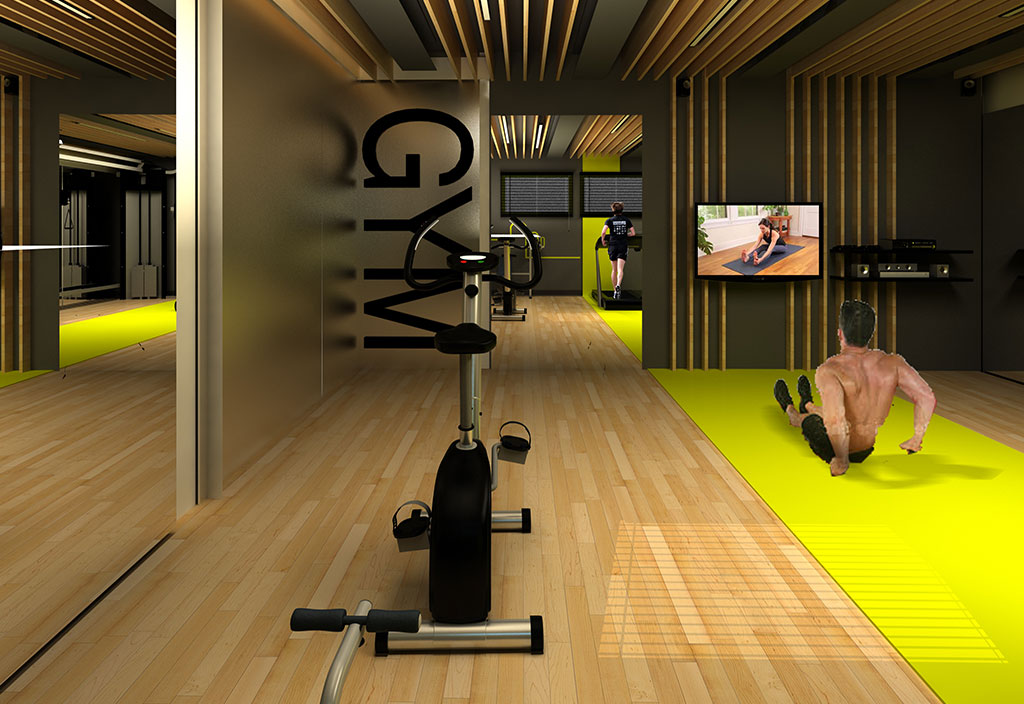
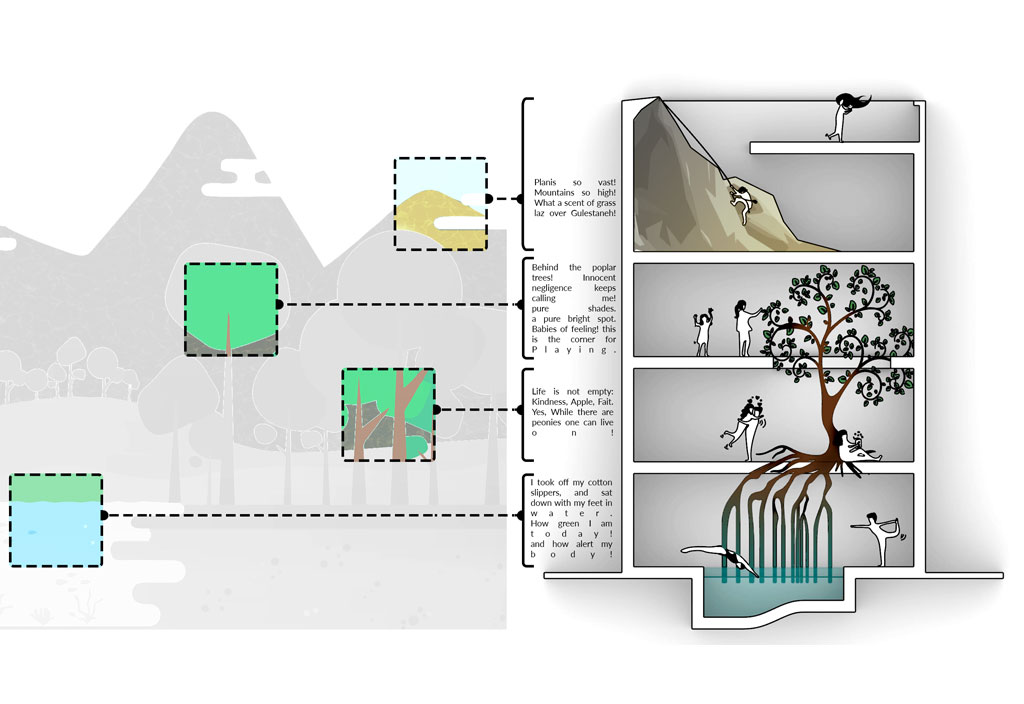
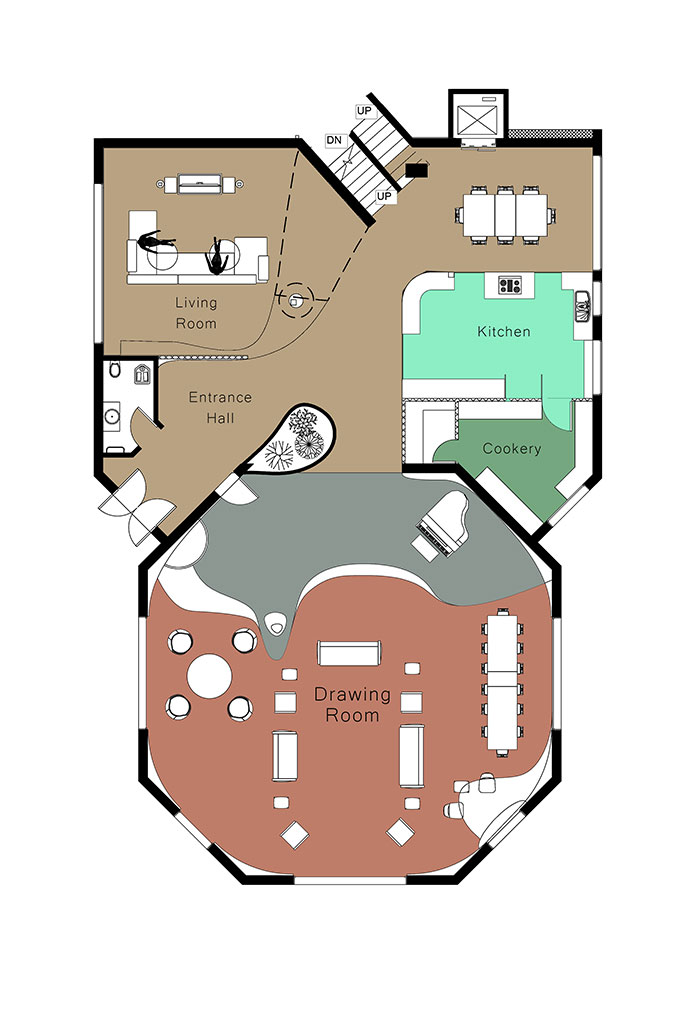
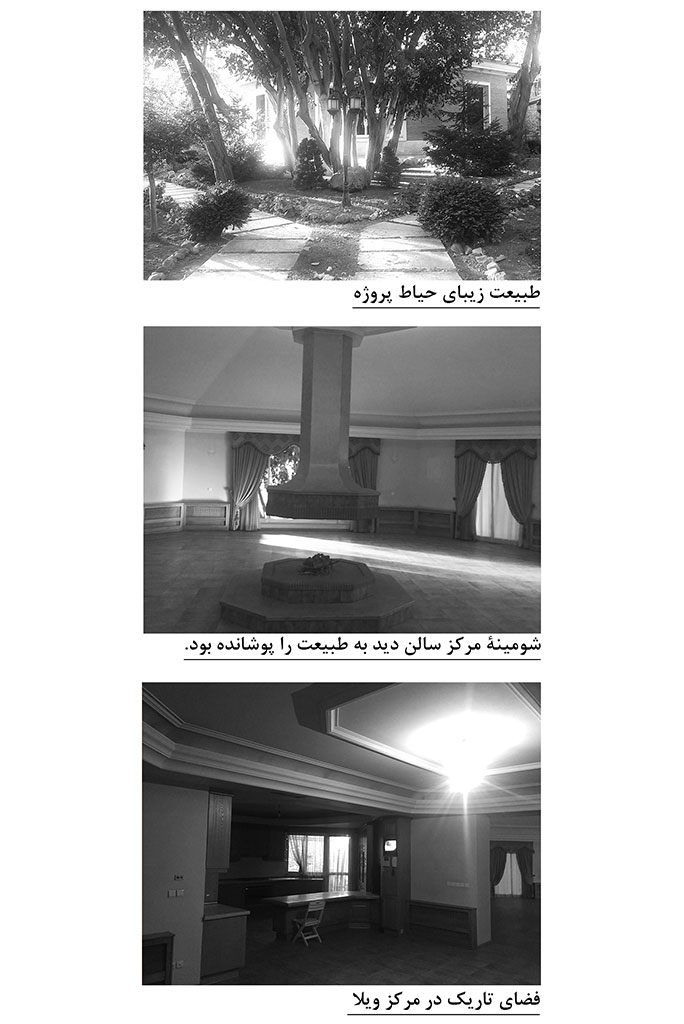
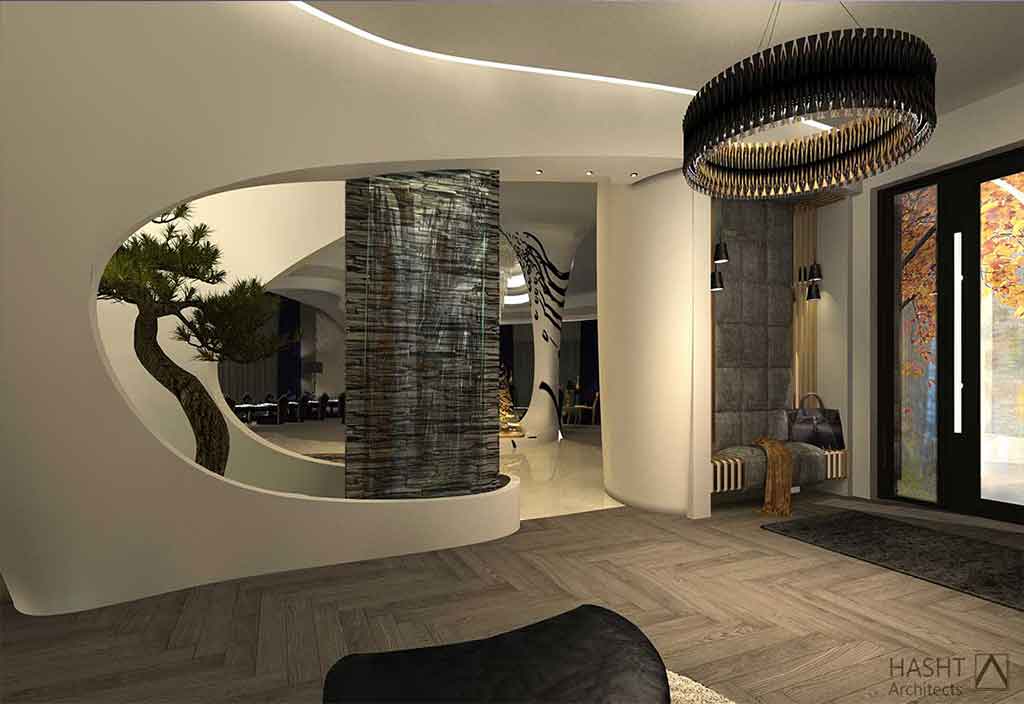






















JAMSHIDIEH VILLA
Tehran | Niavaran | 2016
This exclusive villa boasts a highly desirable location in Tehran's most stunning, inviting, and opulent neighborhoods. The construction and design of the villa were in 1380 by a couple who were the previous residents of the villa. The client purchased the villa and requested our interior design and renovation services. The project with an area of about 2000 square meters was divided into 6 height codes, With spaces including a swimming pool, reception hall, kitchen, work rooms, bedrooms, and sleeping porch. Due to its substantial proportions evoked a sense of fear in the spectators.
On the other hand, Rooms on the ground floor benefitted from the exposure to southern light, which makes the kitchen, and the central space of the house looked dark. There were bedrooms on the upper half floor, which seemed small for the Client's requirements, and he wanted to decrease the number of bedrooms and increase their area. We went to the roof of the project and encountered very pristine and beautiful views and wonderful nature around.
While visiting the roof of the project, we were presented with a breathtaking panorama of the surrounding natural environment, characterized by its immaculate and picturesque qualities.
The foregoing experience unequivocally evinced the indispensability of a well-conceived roof design for the villa in question to enable the inhabitants to consistently savor the resplendent outdoor environment.
The project in question comprised two mezzanine levels situated in the basement, with one being designated for use as a pool area and the other as a spacious but unoccupied area. It was necessary to reassess the latter space in order to optimize its functionality and practicality.
The focal aspect of the project that commanded considerable attention and admiration was the natural topography encompassing the villa's premises. The nature that led us to define the villa as a part of it. The concept of integrating nature into the villa was conceived and the process of moving through the building, from its foundation to its rooftop, entails a metaphorical journey from the earth to the sky. In this way, we saw the movement of water and the trunk of the tree at the entrance, the crown of the tree and leaves in the corridor of the bedrooms, the boulders of the mountain in the throne room, and the sky on the roof. Even the functions came to our aid and we saw the pool and water in the basement where nature is rooted.
The experience of walking in space, with its inherent fluidity, has been vividly etched in our imagination, but closed and broken corners and walls sometimes hindered this freedom and fluidity. We included the walls by curving them, sometimes distancing them from the ground, sometimes extending them on the ceiling, and we assumed them to be living members that guide the audience fluidly in the space in a dynamic and connected discourse.
In the central area of the villa, we removed the rooms and turned the obtained space into a family living room, which directs the southern light with an open visual view of the central space of the villa. The separating wall felt like a warm embrace, and it became more open to the audience by moving from the entrance to the interior of the villa.
We made the large size of the previous kitchen a little smaller and moved the dirty kitchen from west to east to create a new space. This matter has presented two novel opportunities, firstly, the placement of the elevator door, which could only be placed in this place to create a complete vertical connection between all floors, and secondly, the creation of a family dining area, which was more suitable to be placed next to the kitchen.
In the mezzanine of the bedrooms, we made the corridor smaller and the rooms bigger. In the corridor space, we displayed the crown of the tree and the branches of a symbolic tree that split the wall and grow. The master room was considered the main room, and we allocated the largest area and the best view and light to this room. We divided it into three parts including a sleeping area, a sitting area, a dressing table, a dressing area, and a bathroom. To separate the sleeping area from the sitting area, we designed a blade fluidly connected to the wall above the bed, which defines the privacy of the bed like a cradle, and we designed the bed to continue free movement on the wall and ceiling. On the other hand, in the sitting area, we opened a large window to the existing beautiful nature and considered a wall for placing books and objects, which was stretched on the ceiling with a dynamic form.
In the course of moving from the earth to the sky, we reached the mountain in the Shahneshin area. So we designed a stone wall that did not reach the ceiling and we could see a part of the sky above it. The slab even extended to the roof and became a rooftop barbeque area. We designed a natural fireplace in the heart of Shahneshin stone to create a warm and intimate atmosphere in this area.
We turned this slope into a green hill, where a path of rubble stones in the heart of it leads the audience to the peak, and there was an observation point that could look at the entire beautiful courtyard of the villa. On the other hand, at the junction of the two levels, we designed a natural water feature that moves from the upper level, slides over the artificial rubble, and flows into a pond covered with lotus flowers at the lower level. On the other side of this level, we designed a space for the hearth and fireplace and central furniture around it.
More private spaces were placed on the upper level of the roof. A space for a Jacuzzi and lounge chairs, as well as, a gazebo for billiards and a gazebo for family gatherings, which were separated by a joint covered with glycerin flowers. On the third level of the roof, there were installation elements that we covered with a concrete wall, but due to the wonderful view of the surrounding nature from this height, we added a terrace-like space for beholding these scenic splendors.
We designed the pool and dry and wet sauna in the mezzanine floor in accordance with the continuous levels in other spaces. An idea derived from the fluid energy in water waves was formed and formed curved plates that were connected to each other in the walls and ceiling. Sometimes this wave came forward and created a sitting platform, sometimes it came towards the ground and became a pillar, and between all these plates there were wavy lines of light. We divided the large empty space of the lower floor into a home theater (screening), a gym, and a laundry room. Our idea in designing the exhibition space was to create a sense of sequencing in the space. We continuously created slanted cuts in the ceiling and walls, which transformed the space into several scenes. In the gym, we designed a space combining strength and excitement using sharp colors and solid materials.
Type: Residential
Location: Niavaran, Tehran
Client: Eng Saeed Fotouhi
Design Team: Shahab Ahmadi, Iman Hedayati,Maedeh Massah, Naghmeh Olfat, Niloufar Mohammadzadeh, Shiva Hakimian, Mitra Mohammadi
Construction: Hasht Architecture Office
Electrical and Mechanical Facilities: Hasht Architects
Graphics Design: Hasht Studio
Graphic Collaborators: Ali Ahmadi, Shaghayegh Beyrami
Area: 670 square meters
Status: Running
Date: May 2017